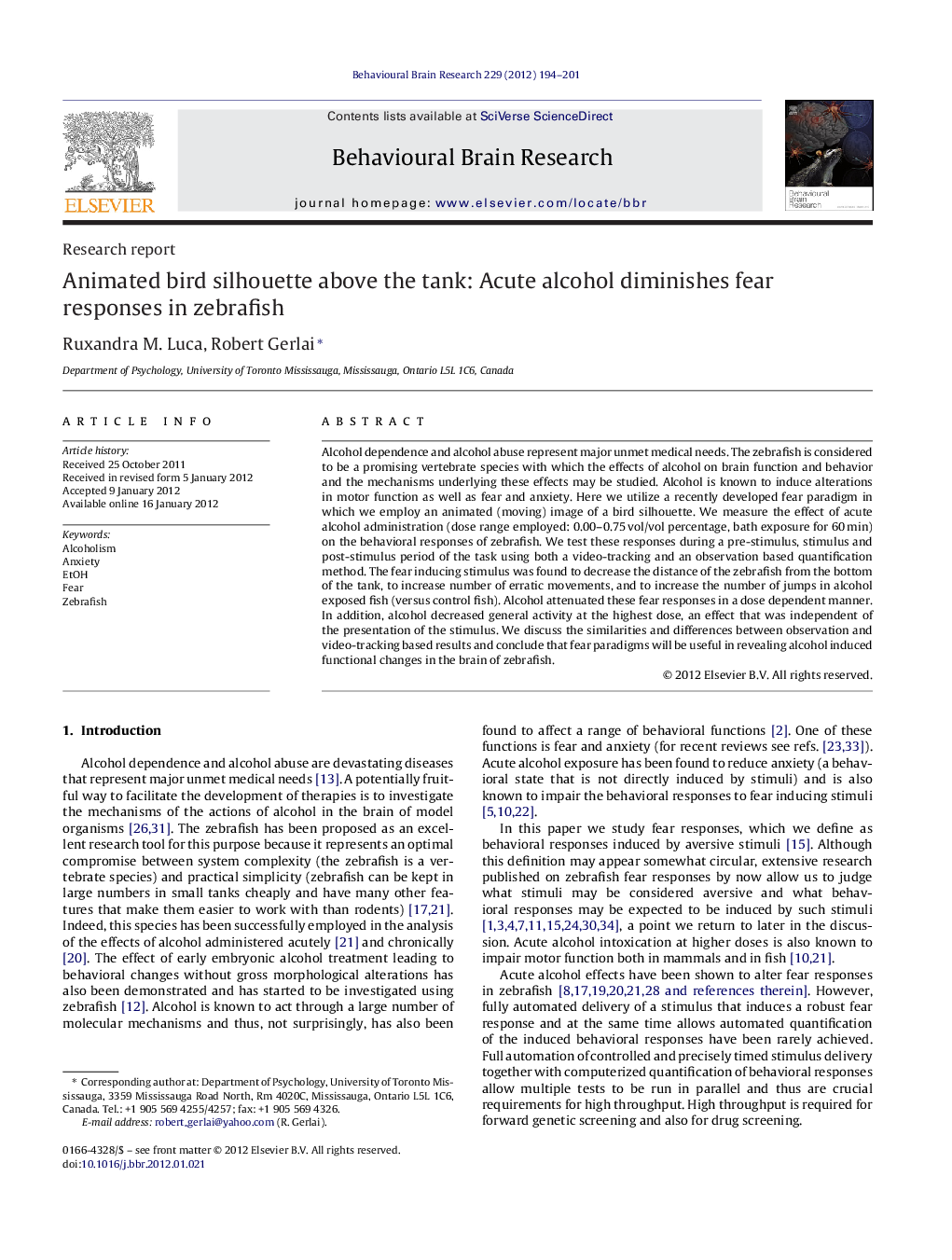| کد مقاله | کد نشریه | سال انتشار | مقاله انگلیسی | نسخه تمام متن |
|---|---|---|---|---|
| 4313362 | 1289994 | 2012 | 8 صفحه PDF | دانلود رایگان |

Alcohol dependence and alcohol abuse represent major unmet medical needs. The zebrafish is considered to be a promising vertebrate species with which the effects of alcohol on brain function and behavior and the mechanisms underlying these effects may be studied. Alcohol is known to induce alterations in motor function as well as fear and anxiety. Here we utilize a recently developed fear paradigm in which we employ an animated (moving) image of a bird silhouette. We measure the effect of acute alcohol administration (dose range employed: 0.00–0.75 vol/vol percentage, bath exposure for 60 min) on the behavioral responses of zebrafish. We test these responses during a pre-stimulus, stimulus and post-stimulus period of the task using both a video-tracking and an observation based quantification method. The fear inducing stimulus was found to decrease the distance of the zebrafish from the bottom of the tank, to increase number of erratic movements, and to increase the number of jumps in alcohol exposed fish (versus control fish). Alcohol attenuated these fear responses in a dose dependent manner. In addition, alcohol decreased general activity at the highest dose, an effect that was independent of the presentation of the stimulus. We discuss the similarities and differences between observation and video-tracking based results and conclude that fear paradigms will be useful in revealing alcohol induced functional changes in the brain of zebrafish.
► A fear paradigm using an animated aversive visual stimulus tested the effects of acute alcohol exposure in zebrafish.
► The stimulus induced a diving response in zebrafish.
► Alcohol reduced the stimulus induced diving response.
► The stimulus increased the frequency of erratic movement of zebrafish.
► Alcohol reduced the stimulus induced increase of erratic movement.
Journal: Behavioural Brain Research - Volume 229, Issue 1, 1 April 2012, Pages 194–201